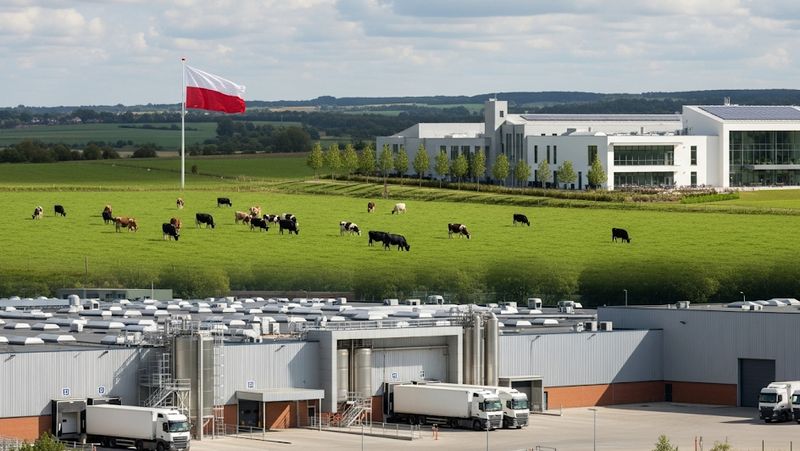
Published in News
Market Pulse: UK Labour Costs Bite, Poland's Beef Output Rises, and Dutch Processor Invests
A new UK report highlights the direct link between labour costs and food prices, Polish beef production continues to grow, and a major Dutch processor invests in its value-added capacity.

Bo Pedersen
Chief Revenue Officer
As the industry grapples with persistent cost pressures and shifting supply dynamics, this week’s key developments highlight the direct impact of labour costs in the UK, the continued rise of Poland as a beef producer, and a strategic investment in value-added production in the Netherlands.
UK Market: BMPA Report Links Labour Costs to 5% Rise in Meat Prices
What happened: The British Meat Processors Association (BMPA) has published a new economic report quantifying the direct impact of rising labour costs on retail meat prices. The analysis shows that increased wages, apprenticeship levy costs, and higher National Insurance contributions have added an average of 5% to the shelf price of meat over the past 12 months, separate from farming or energy input costs.
Why it matters: This report provides concrete data that backs up the Bank of England's recent warnings, which we covered in our briefing on August 22nd. It moves the conversation beyond general inflation and isolates labour as a key, structural driver of food prices. For processors, this is crucial evidence to demonstrate that price increases are a direct result of domestic economic policy and are not simply a matter of margin expansion.
Implications & suggested actions:
Processors: This BMPA report is a vital tool for your commercial negotiations. Use this independent, data-driven analysis to clearly explain the structural nature of your cost increases to retail and food service customers.
Farmers: While the focus is on processing, rising costs downstream will maintain pressure on the entire supply chain. Continuing to focus on efficiency and meeting processor specifications remains the best way to protect your own margins.
Retailers: This report provides important context on the pressures your suppliers are facing. It underscores the need for a collaborative approach to managing supply chain inflation, as these are non-negotiable domestic costs that cannot be easily mitigated.
Eastern Europe: Polish Beef Production Continues to Grow
What happened: The latest figures from Poland's Central Statistical Office show that the country's beef production increased by 4.5% in the first half of 2025 compared to the same period last year. The growth has been driven by both an increase in the domestic herd and a rise in the number of cattle being imported for finishing and processing in Poland. The majority of this increased output is destined for export to other EU member states.
Why it matters: This data confirms Poland's rising importance as a key player in the European beef market, not just in poultry as we noted on August 26th. Its growing production provides an essential source of supply for the wider EU, particularly as herds in some Western European countries, like France, are contracting. Poland's cost-competitive model is reshaping beef trade flows across the continent.
Implications & suggested actions:
Polish Farmers & Processors: The continued growth is a major success. To secure your position, it is vital to keep investing in quality, traceability, and sustainability to meet the expectations of discerning customers in markets like Germany and Italy.
EU Competitors: The expansion of Polish beef production increases the competitive pressure. Focus on your own unique selling points, such as national quality assurance schemes, PGI status, or specific breed characteristics, to differentiate your product from Polish imports.
Wholesalers & Buyers: Poland is an increasingly important and reliable source for high volumes of beef. This provides a valuable opportunity to diversify your sourcing portfolio and manage costs.
Corporate Strategy: Van Loon Group Invests €60m in Convenience
What happened: Dutch processor Van Loon Group has announced a €60 million investment to build a new, state-of-the-art facility focused on convenience and ready-to-eat products. The new plant will produce items like pre-cooked meatballs, burgers, and other meal components for both retail and food service customers across the Benelux region and Germany.
Why it matters: This is a major strategic investment in the value-added sector. It shows a clear recognition that consumer demand for convenient, easy-to-prepare meal solutions is a primary driver of growth in the meat industry. For Van Loon Group, it represents a significant move up the value chain, shifting the focus from raw material processing to finished consumer goods.
Implications & suggested actions:
Processors: This investment highlights the critical importance of having a strong presence in the convenience category. Assess your own capabilities in value-added and ready-to-eat products and consider where you can innovate to meet this growing demand.
Equipment & Ingredient Suppliers: A new, large-scale facility like this represents a major opportunity. Engage with Van Loon Group to showcase your solutions in areas like cooking and cooling technology, packaging, and functional ingredients.
Retailers: The demand for high-quality convenience is clear. Work with innovative suppliers like Van Loon Group to develop new and exciting private-label ranges that cater to time-poor consumers and command a premium price.
Sources
New BMPA report quantifies impact of labour costs on meat prices - British Meat Processors Association (29 August 2025)
Polish beef production continues to rise in H1 2025 - Poland Central Statistical Office (GUS) (28 August 2025)
Van Loon Group announces €60m investment in new convenience food facility - Vleesmagazine (28 August 2025)
